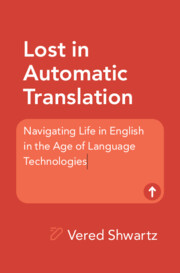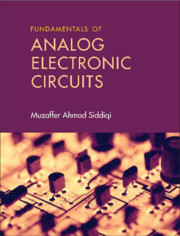Refine search
Actions for selected content:
3388592 results
7 - Economic Theory’s Sweet Spot: Lean Systems
- from II - Four Strategies of Supply Chain Management
-
- Book:
- Re-Imagining Supply Chain Management
- Published online:
- 22 September 2025
- Print publication:
- 09 October 2025, pp 142-162
-
- Chapter
- Export citation
Contents
-
- Book:
- The Cambridge Handbook of One Health and the Law
- Published online:
- 25 September 2025
- Print publication:
- 09 October 2025, pp v-vi
-
- Chapter
- Export citation
Epigraph
-
- Book:
- The Epistemology of the Secret
- Published online:
- 23 July 2025
- Print publication:
- 09 October 2025, pp v-vi
-
- Chapter
- Export citation
Valorisation of Agri-Food By-Products as Dietary Interventions to Support Gut Microbiota and Health in Weaned Pigs
-
- Journal:
- Proceedings of the Nutrition Society / Volume 84 / Issue OCE4 / August 2025
- Published online by Cambridge University Press:
- 09 October 2025, E265
-
- Article
-
- You have access
- Export citation
16 - Achieving One Health Policy Objectives through a Legally Supported, Value-Based Health and Care Approach
- from Part III - One Health and Future Legal Structures
-
-
- Book:
- The Cambridge Handbook of One Health and the Law
- Published online:
- 25 September 2025
- Print publication:
- 09 October 2025, pp 244-258
-
- Chapter
- Export citation
Part II - One Health and Contemporary Legal Structures
-
- Book:
- The Cambridge Handbook of One Health and the Law
- Published online:
- 25 September 2025
- Print publication:
- 09 October 2025, pp 87-180
-
- Chapter
- Export citation
5 - The Sex Wars Come to AIDS
-
- Book:
- Risk and Resistance
- Published online:
- 10 September 2025
- Print publication:
- 09 October 2025, pp 109-144
-
- Chapter
- Export citation
4 - Rhythms of Work
-
- Book:
- The Experience of Work in Early Modern England
- Published online:
- 19 September 2025
- Print publication:
- 09 October 2025, pp 132-174
-
- Chapter
-
- You have access
- Open access
- HTML
- Export citation

Shakespeare Survey 78
- Shakespeare and Communities
-
- Published online:
- 08 October 2025
- Print publication:
- 16 October 2025

Lost in Automatic Translation
- Navigating Life in English in the Age of Language Technologies
-
- Published online:
- 08 October 2025
- Print publication:
- 21 August 2025

Fundamentals of Analog Electronic Circuits
-
- Published online:
- 08 October 2025
- Print publication:
- 31 October 2025
-
- Textbook
- Export citation
Political Equality and Economic Inequality in Étienne-Géry Lenglet’s Recipe for the Modern Republic
-
- Journal:
- The Historical Journal , First View
- Published online by Cambridge University Press:
- 08 October 2025, pp. 1-20
-
- Article
-
- You have access
- Open access
- HTML
- Export citation
Transatlantic Bondage: Slavery and Freedom in Spain, Santo Domingo, and Puerto Rico. Edited by Lissette Acosta Corniel . Albany: SUNY Press, 2024. Pp. 304. $34.95 Paperback.
-
- Journal:
- The Americas , First View
- Published online by Cambridge University Press:
- 08 October 2025, pp. 1-2
-
- Article
- Export citation
Impact of crops and fertilizers on soil respiration in a long-term field experiment
-
- Journal:
- The Journal of Agricultural Science / Accepted manuscript
- Published online by Cambridge University Press:
- 08 October 2025, pp. 1-26
-
- Article
- Export citation
Counting African Workers Between Administrative Performance and Invisibility: Labor Statistics and Hierarchical Tensions in Late Colonial Guinea-Bissau (1955–1962)
-
- Journal:
- International Labor and Working-Class History , First View
- Published online by Cambridge University Press:
- 08 October 2025, pp. 1-16
-
- Article
-
- You have access
- Open access
- HTML
- Export citation
Political and Social Transformation of Kazakhstan During the Years of Revolutions
-
- Journal:
- Nationalities Papers , FirstView
- Published online by Cambridge University Press:
- 08 October 2025, pp. 1-20
-
- Article
-
- You have access
- Open access
- HTML
- Export citation
The promise of unconceived alternatives: metaphysical explanation in Indian philosophy
-
- Journal:
- Religious Studies , First View
- Published online by Cambridge University Press:
- 08 October 2025, pp. 1-15
-
- Article
-
- You have access
- Open access
- HTML
- Export citation
Wave and vortex structures in transitional mixing layers: a numerical investigation
-
- Journal:
- Journal of Fluid Mechanics / Volume 1020 / 10 October 2025
- Published online by Cambridge University Press:
- 08 October 2025, A48
-
- Article
- Export citation
A note on morphisms to wreath products
- Part of
-
- Journal:
- Mathematical Proceedings of the Cambridge Philosophical Society , First View
- Published online by Cambridge University Press:
- 08 October 2025, pp. 1-28
-
- Article
- Export citation
Congenital extrahepatic portosystemic shunt with partial anomalous pulmonary venous return and aneurysmal dilation of the pulmonary artery: successful management of a complex multisystem congenital anomaly
-
- Journal:
- Cardiology in the Young , First View
- Published online by Cambridge University Press:
- 08 October 2025, pp. 1-3
-
- Article
- Export citation









